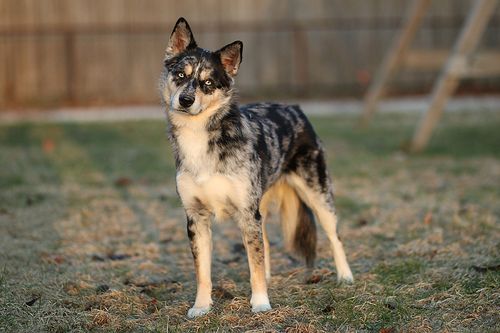Last Updated on May 28, 2023 by Fumipets
The Australian Shepherd Husky Mix is a lovely designer breed, that emerges from crossing an Australian Shepherd with a Siberian Husky.
When you combine an exceptionally gorgeous Australian Shepherd with an extremely attractive Siberian Husky, what do you get? The Australian Shepherd Husky Mix.
Without a doubt, this incredibly charming, four-legged fluff-ball has the potential to melt the hearts of people everywhere!
Whether you’re a new owner of an Australian Shepherd Husky Mix or considering adding one to your family, you’ve probably got a lot of questions about the breed, including whether or not it’s right for you, how well it gets along with family and children, its characteristics, the best living conditions, and so on.
In this article, we will explore each of these topics and more in order to help you determine whether or not the Australian Shepherd Husky Mix is the ideal breed for your family and lifestyle.
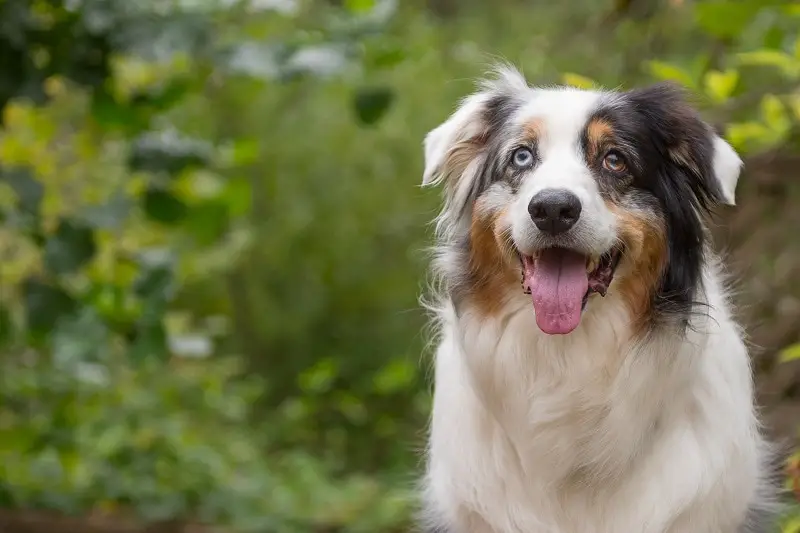
History
As stated earlier, when the Australian Shepherd and the Siberian Husky are crossed, the result is a crossbred that is known as the Australian Shepherd Husky Mix. The Australian Shepherd Husky Mix is referred to as an “Aussie Husky,” “Aussie Siberian,” or “Aussie Husky Shepherd” in many circles.
Because the history of crossbreds is not as well documented as the history of purebreds, we will dig into the history of the parents to learn more about their background and lineage.
The Australian Shepherd
Although its name suggests otherwise, the Australian Shepherd did not actually originate from Australia. It is most likely that this breed was developed in the western United States during the early 1900s from Collie variants for the purpose of herding sheep. In addition to being known as the “Aussie,” the Australian Shepherd has also been known by several other names, including the California Shepherd, New Mexican Shepherd, Bob-tail, Pastor Dog, and Spanish Shepherd, throughout its history.
Afterwards, in the 1950s, the Australian Shepherd was recognized for its working and intellectual abilities, and was used as therapy dogs, family pets, drug detectors, handicap guide dogs, and search and rescue dogs.
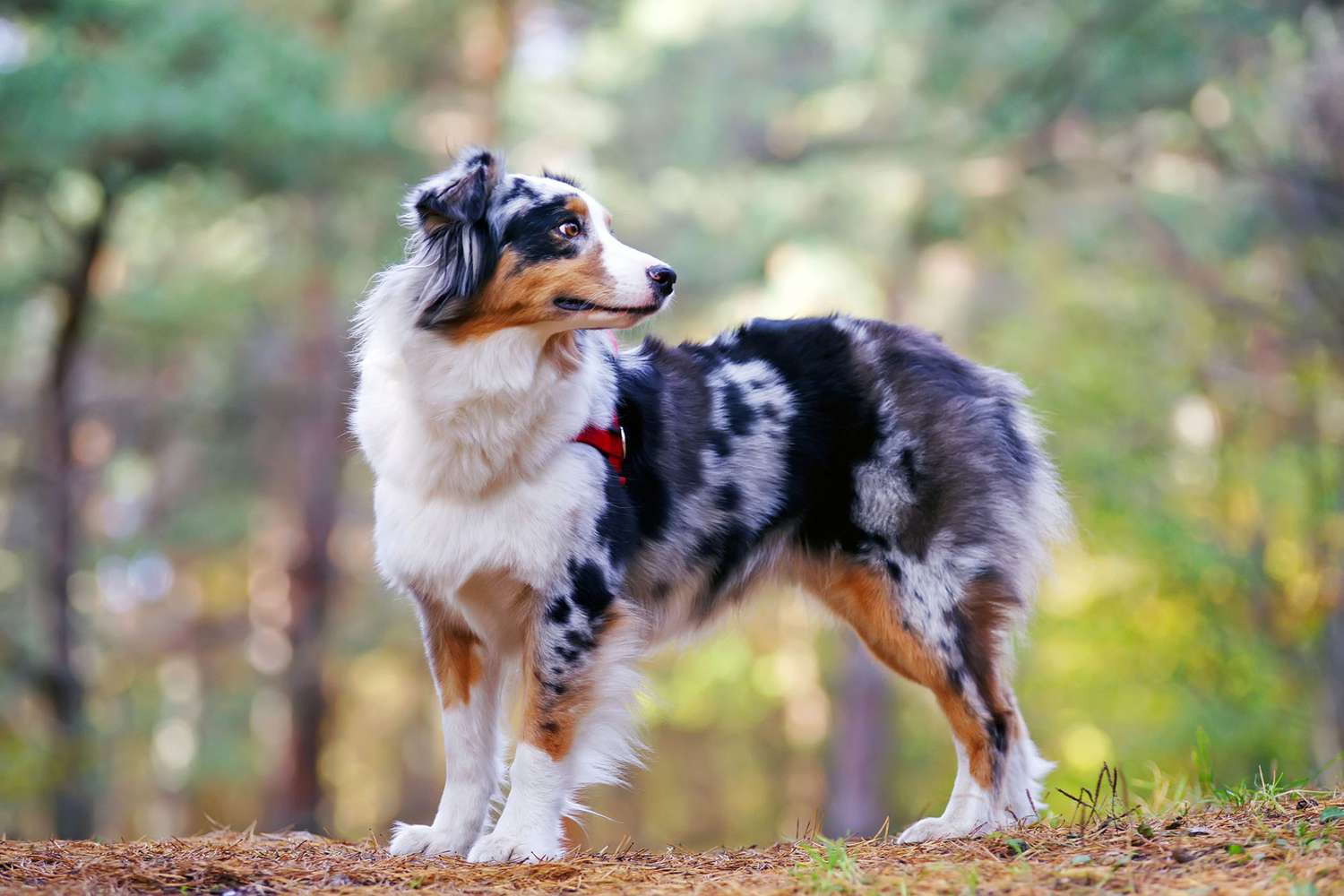
The Siberian Husky
The Siberian Husky, also known as the Husky, Sibe or Chukcha, is a medium-sized working dog that was originally bred as sled dogs in the Arctic region. It only arrived in North America in the twentieth century, where it served as search and rescue dogs for the United States Army.
Because they descended from the Spitz bloodline, the nomadic Chukchi people of northeastern Siberia have been breeding these dogs for more than three thousand years, and have been successful in keeping them purebred in such a remote place.
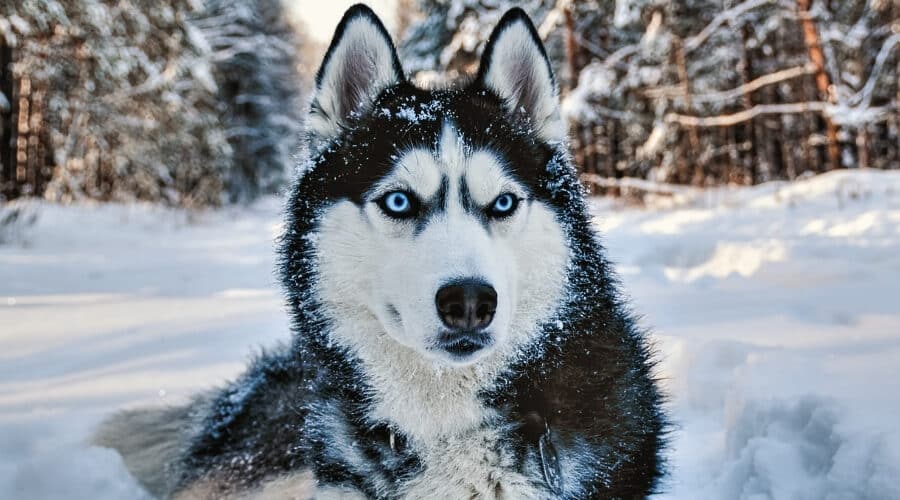
Physical Characteristics of the Aussie Husky Mix
The Aussie Husky may inherit genes from either parent, and these genes may be more dominant from one parent or a mix of both parents in the case of the male.
Crossbreds typically have a range of traits due to the fact that they are bred from two separate purebreds, and there is no set ratio for which gene(s) will be acquired during the course of the breeding cycle.
As a result you can’t be certain that the pups will still be stunningly charming and affectionate when they grow up.
The Australian Shepherd Husky Mix is a medium-sized dog with a height of around 20 – 24 inches at the shoulder for males and 18 – 21 inches at the shoulder for females. Their weight typically ranges between 40 and 55 pounds for the average male and 35 to 55 pounds for the average female, depending on their height.
A robust, weather-resistant double coat covers the Aussie Husky, which comes in a range of basic colours, including black, brown and cream; grey; and white; as well as a range of colour combinations including shades and patches.
In most cases, one colour will dominate the chest to belly region, as well as the legs and paws, while another colour will dominate the remainder of the body.
The facial characteristics of this breed include triangular-shaped ears, a slender nose, and oval eyes in a variety of hues, including bi-coloured eyes if inherited from the Husky.
Temperament of the Australian Shepherd Husky Mix
Because this breed is a cross between two purebred dogs, we can never be certain about the personality, temperament, and attributes of the progeny.
The Aussie Husky is a breed that is naturally energetic, loyal, robust, and sociable by nature. They are also a very attentive and loving dog when it comes to their family, but they may be reserved and distant when it comes to unfamiliar individuals.
It is critical that these dogs be socialised with new humans and, more importantly, with other dogs from an early age, using appropriate socialisation tactics and methods. Involving your puppy in appropriate socialisation activities throughout the puppy period can guarantee that your puppy grows into a sociable, well-behaved, and well-mannered adult dog.
Good practises to promote socialising include regular trips to the local dog park, where your puppy may learn to mingle with other dogs as well as with other humans. Enrolling your dog in training lessons will also help you to improve his friendly but protective behaviour.
Health Conditions and Risks associated with the Australian Shepherd Husky Mix
The Aussie Husky Shepherd is a relatively healthy breed, with an estimated lifetime ranging between 10 and 13 years under normal conditions, according to breed standards.
Despite this, there are certain health disorders to which it may be vulnerable, such as allergies, anxiety, Corneal Dystrophy, Ear Problems, Elbow Dysplasia, Epilepsy, Eye Anomaly, Hip Dysplasia and Progressive Retinal Atrophy (PRA).
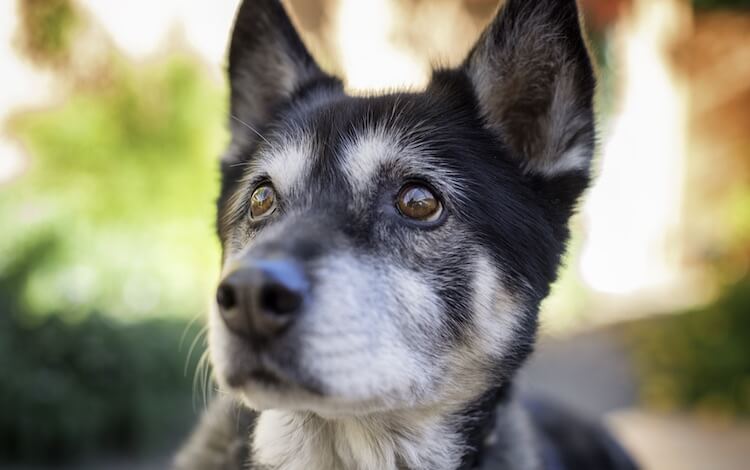
Living Conditions for an Australian Shepherd Husky Mix
If you are thinking about getting this breed, one of the most crucial elements to consider is whether or not the living circumstances are appropriate for the dog. A contained place like a home, or even a small backyard, would be an excellent illustration of this dog’s innate need to flee.
Particularly if your dog will have access to a backyard, you’ll want to be certain that you have a safe and well constructed fence system. While a backyard will offer your dog the opportunity to run about in a safe environment, the last thing you want is for your dog to use off any cooped up energy by leaping over the fence!

Children and Family
As previously noted, the Aussie Husky is a very devoted dog towards its family and will not have many issues with children – although, like with any dogs, basic socialisation training is essential.
If you have children and are concerned about bringing a dog into a home with children, you might want to consider other breeds.
Other Dogs and Pets at Home
The compatibility of an Australian Shepherd Husky Mix with other dogs and household pets is another crucial consideration.
Although it is true that appropriate socialisation must begin at a young age in order for puppies to exhibit friendly behaviour with other pets, another important issue to ask yourself is whether or not your other pets are as hyperactive as this breed is known to be.
Giving your dogs the opportunity to play together, have some companionship, and form a relationship with one another is crucial for a dog’s pleasure. However, having the incorrect dog or pet at home with an Australian Shepherd Husky Mix may result in an Aussie Husky that may be considered antisocial.
If you have an Aussie Husky in the home with you, the ideal companion should be an enthusiastic, active, and outgoing dog – most significantly, a dog that is of comparable size to the Aussie Husky. A dog that is much bigger than this breed may cause him to feel frightened, which might interfere with the outgoing and friendly nature of the Australian Shepherd Husky Mix.
On the other side, if you couple this breed with a dog that is highly timid, less active, and who does not like playing or socialising, the outcomes may not be as positive as you had hoped, and there is a good chance that they will be a poor fit as friends in the same home.
Maintenance of the Australian Shepherd Husky Mix
Diet and Nutrition
The Australian Shepherd Husky Mix need nutritious food that is appropriate for their age and that has a correct mixture of health supplements, minerals, and vitamins to ensure that they have a long and healthy life.
As a result of this breed’s proclivity for both elbow and hip dysplasia, premium fish oil is an excellent supplement to include in their diet. Also vital is that you keep an eye on him to make sure he does not get overweight – obesity may put additional pressure on the joints, increasing the likelihood of developing more severe health problems.
Because no two dogs have the same metabolism, it’s vital to note that certain dogs will need more, or fewer, calories than others, as well as taking their activity level and age into consideration when planning their diet. You might consider scheduling an appointment with your dog’s veterinarian to discuss a diet that is suited for your dog’s specific needs.
Grooming
The Aussie Husky Mix has a double coat with a thick undercoat that will need brushing on a regular basis. They are also moderate shedders, so if you intend on bringing an Aussie Husky into your home, you can expect to have to vacuum on a frequent basis in order to keep the level of shedding in the household under control.
If you want your dog’s coat to be healthy and glossy, cleaning his teeth on a regular basis should be done at the very least twice a week and preferably once a day. It is most noticeable while the hair is shedding in the early spring, although they may shed at any time of the year.
It is advised that you use a standard slicker brush in unison with an undercoat rake to remove the thicker, extra hair from the undercoat while brushing your dog.
Taking care of your dog’s ears and teeth is just as essential as taking care of his coat in terms of health. You will want to examine and clean your pup’s ears on a frequent basis to ensure that he does not get an ear infection. It is preferable to use natural products since certain cleaning solutions intended for dogs might include toxic or harsh chemicals that may be hazardous to the dog’s health if used improperly.
Untreated dental disorders may lead to other health concerns such as tooth decay, infection, and discomfort, and they have the potential to spread throughout the body.
It is essential to brush your pup’s teeth on a regular basis, preferably twice daily, to avoid plaque accumulation on his teeth.
Training
This breed has a high level of intelligence and may be relatively simple to train. During the puppy’s development, it is critical that you begin using correct training tactics and establishing yourself as the “leader” of the “pack” from the beginning.
Performing this action is critical because it encourages good behaviour in the dog as he grows older. The last thing you want is a stubborn dog that will not listen to your commands!
Due to the fact that these dogs like outdoor activities, teaching them outside may also assist in reinforcing good behaviour with positive encouragement in an environment where they will feel naturally joyful and eager to learn.
As with any training, these dogs will not learn in a matter of hours and will not be able to recall the orders for the rest of their lives unless they are exposed to them again. When teaching your dog, be sure you do it regularly and often using positive stimuli to ensure that your dog retains his or her allegiance to you.
Costs
Prices for an Australian Shepherd Husky Mix will often vary between $600 and $1,000 on the open market.
However, when it comes to owning a new puppy or dog, it is not the only expense you should anticipate. For veterinary medical bills alone, you may anticipate to pay anything between $600 to $1,500 per year, not adding any drugs or supplements that are particular to your health condition.
Training lessons may range in price from $25 to $300 each year, depending on the books, courses, and/or the use of a personal trainer you choose.
Aside from the above-mentioned prices, there are additional incidental expenses, such as toys and leashes, beds, food, treats, grooming, supplements and vitamins, and other unforeseen expenses, which may total $1,200 – $4,000 a year, or $100 – $400 per month under typical conditions.
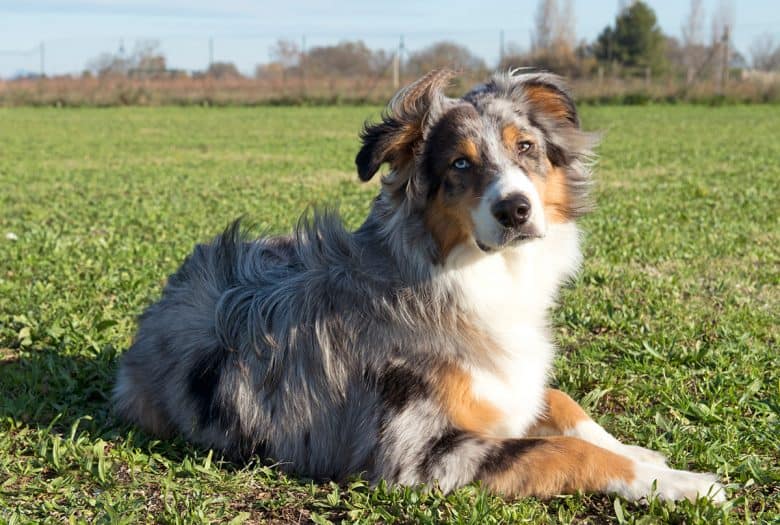
Is The Aussie Husky The Right Breed For You?
Ask yourself some of the following questions before deciding whether or not this is the breed that is best for you:
Do you have any previous experience with a dog or a pet that has a lot of energy?
Does your schedule provide enough time for your dog to go for a walk, play, or engage in intensive activity?
Does your house have an adequately protected backyard with a high fence (or are you ready to make the investment) to guarantee that your dog is safe and cannot escape?
Do you have any other pets at home that would make excellent companions for the Aussie Husky?
What kind of family do you have?
Do you have children in your home?
If so, are you willing to give adequate socialisation and training strategies to encourage excellent behaviour in your dog as he grows older?
It is possible to anticipate having a joyful, active, outgoing, and loyal four-legged buddy join your family if you believe you have appropriately responded yes to all of these questions and that the Australian Shepherd Husky Mix will be a good fit for you and your family.
Frequently Asked Questions
- Q: Are Australian Shepherd Husky Mixes good with children? A: Yes, with proper socialization and training, Australian Shepherd Husky Mixes can be great with children. However, supervision is always recommended, especially with younger children, to ensure a positive and safe interaction.
- Q: How much exercise do Australian Shepherd Husky Mixes need? A: Australian Shepherd Husky Mixes are highly active dogs and require at least 1-2 hours of exercise every day. This can include walks, runs, playtime, and mental stimulation activities.
- Q: Are Australian Shepherd Husky Mixes easy to train? A: Australian Shepherd Husky Mixes are intelligent and trainable, but they can also be independent and strong-willed. Consistency, positive reinforcement, and early socialization are key to successful training.
- Q: Do Australian Shepherd Husky Mixes get along well with other pets? A: With proper socialization, Australian Shepherd Husky Mixes can get along well with other pets, including cats and other dogs. However, individual temperament and early introductions play a significant role.
- Q: How often do Australian Shepherd Husky Mixes need grooming? A: Australian Shepherd Husky Mixes have a moderate grooming requirement. Regular brushing, around 1-2 times per week, is necessary to keep their coat healthy and free from tangles.
- Q: Can Australian Shepherd Husky Mixes live in hot climates? A: While Australian Shepherd Husky Mixes can tolerate moderate heat, they are better suited to cooler climates due to their thick double coat. It’s important to provide them with shade, fresh water, and avoid strenuous activities during hot weather.
- Q: How long do Australian Shepherd Husky Mixes typically live? A: On average, Australian Shepherd Husky Mixes have a lifespan of 10 to 15 years. Providing them with proper care, including a balanced diet, regular exercise, and routine veterinary check-ups, can help ensure a longer and healthier life.
Remember, each dog is unique, and individual traits may vary. It’s essential to spend time with the specific Australian Shepherd Husky Mix you are interested in and consult with reputable breeders or adoption centers to gather more information specific to that particular dog.
Now that you have a wealth of knowledge about the Australian Shepherd Husky Mix, you can confidently embark on your journey to find the perfect companion that will bring joy, love, and adventure to your life. Good luck in your search for your new furry friend!

